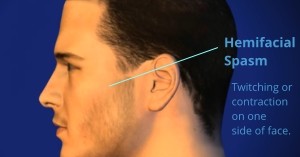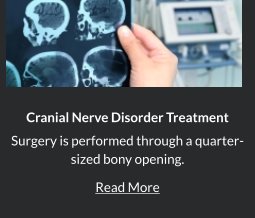There are no oral medications that can effectively stop or control hemifacial spasms. The only options are interventional when the symptoms progress to the point of being unacceptable to the patient. A minimally invasive keyhole approach for microvascular decompression (MVD) will allow your Orange County neurosurgeon Robert Louis, MD to move or separate the blood vessel and hold it away from the irritated nerve. MVD is performed using an endoscopic retromastoid approach to create a small quarter-sized bony opening behind the ear.
Minimally Invasive Keyhole Approach
Robert Louis, MD performs this operation is performed through a quarter-sized bony opening using endoscopic techniques. This keyhole approach preserves the surrounding normal structures as best as possible. Depending on the nerve affected, various other therapies may be indicated. By incorporating cutting-edge technology and instrumentation with proven surgical experience, we make surgery safer, less invasive, and more effective. Learn more about cranial nerve disorders.
Robert Louis, MD specializes in minimally invasive removal of chordoma. Less invasive keyhole surgical approaches incorporate Dr. Louis’ experience and education with cutting-edge technology and instrumentation.
Retomastoid Approach-Facial nerves and blood vessels may be approached directly using the Retromastoid Approach. Robert Louis, MD specializes in this state-of-the-art, minimally invasive keyhole approach to accessing cranial nerves and blood vessels through a small bony opening behind the ear. This approach incorporates cutting-edge technology and instrumentation with Dr. Louis’s surgical experience and training, making surgery safer, less invasive, and more effective.Read more about Retromastoid Approach.
 Hemifacial spasm is characterized by continuous involuntary twitching or contraction of muscles on one side of the face, which usually begins around the eye and spreads to the cheek and mouth. This condition is painless and cannot be controlled by any oral medications.
Hemifacial spasm is characterized by continuous involuntary twitching or contraction of muscles on one side of the face, which usually begins around the eye and spreads to the cheek and mouth. This condition is painless and cannot be controlled by any oral medications.















